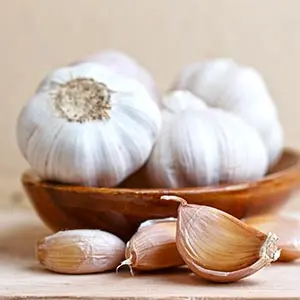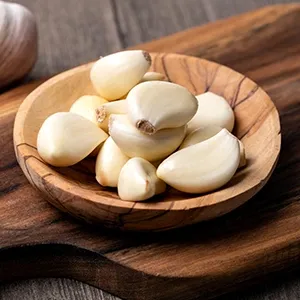Garlic: Can This Bold Herb Help Support Your Pet's Health?
It's indispensable to many cuisines, imparting powerful flavors and a wide array of health benefits. Many pet parents mistake it as toxic for dogs, but that's a misconception — it's actually beneficial when fed in the right amounts.

STORY AT-A-GLANCE
- Garlic gets a bad rap in vet medicine for being in the onion family. But unlike its allium relatives, it's actually safe for dogs because it contains very little thiosulfate, compared to other members of the onion family
- Garlic is one of the oldest cultivated crops in the world, traditionally used for therapeutic applications because it exerts various medicinal actions
- The primary phytochemical in garlic is allicin, which was shown to be beneficial for animal cardiovascular health without causing anemia
- Fresh garlic is your best option to guarantee that you're getting the highest, most beneficial amount of allicin from this aromatic bulb
- You can also use garlic to flavor your pet's homemade bone broth
Editor's Note: This article is a reprint. It was originally published August 17, 2023.
Garlic (Allium sativum) has many uses and potential in the culinary world. Its powerful, pungent aroma and flavor serve as the backbone of many sautéed, baked, roasted, braised or stir-fried dishes. It's also used as a main flavoring ingredient in soups, sauces, marinades, spiced rubs and meat preparations. Well-loved around the world, garlic is a mainstay in just about every cuisine.1 You may be wondering if this pantry staple is as safe and beneficial for your furry friend as it is for you. Continue reading to find out.
Clearing the Confusion About Garlic's Safety
Misinformation about many healthy fruits, vegetables, nuts and seeds abounds on the internet. This is because websites have labeled all risks (such as the risk of overconsumption causing gastrointestinal issues) as risks or "toxicities," which isn't true but has managed to confuse millions of pet lovers, nonetheless. In the case of garlic, this white bulb gets a bad rap in vet medicine for being in the onion family.
"The good news is, unlike its allium relatives, garlic is safe for dogs because it contains very little thiosulfate, the compound that makes onion toxic to pets."
So, when and how did the garlic scare start in the first place? It all began with a study done in Japan and published in the American Journal of Veterinary Research back in 2000.2 The researchers wanted to know if administering large amounts of garlic extract to dogs would result in Heinz body hemolytic anemia, and how much it would take. This is a very specific type of anemia in dogs, cats and horses that is associated with excessive consumption of thiosulfate, a compound that's found in allium vegetables, including garlic, onions, chives and leeks.
The dogs in the study were given 1.25 milliliters of garlic extract per kilogram of body weight once a day for seven days — this is a huge quantity and much more than you would normally feed your dog (and no dog would naturally eat). Still, the results showed that even this amount did not cause anemia or any physical symptoms.
But there were microscopic changes on the red blood cells showing oxidative stress that led the researchers to claim large amounts of garlic extract is unsafe for dogs, which eventually was misinterpreted to "all types of garlic in all amounts" should not be fed to pets, and has caused fearmongering and inaccurate urban legends in the pet world ever since.3
The dosage involved in the initial study was so unrealistic that the original authors decided to do a follow-up study in 2004. And this time, they reversed their initial stance on garlic and stated that it actually has the potential to promote immune function and lower the risk for cardiovascular diseases in dogs.4 Garlic and garlic extract can be found on the labels of many of the top-selling pet foods in the world.
Despite this, the misconception still persists about garlic's safety. But to sum it all up, garlic is safe for your dog and cat to consume and can even impart beneficial effects when added to your pet's nutritionally balanced, homemade meals in the appropriate amounts (more about this later).
Garlic Is Safe, Onions Are Not

While it's OK to give garlic to your dog, you should never feed them onions, leeks and chives because these contain higher amounts of thiosulfate. In fact, onions contain about 15 times the thiosulfate concentration of garlic!5 Do not offer your pet onions in any form, whether dried, powdered, fresh or cooked.
Allicin — The Medicinal Component in Garlic
Garlic is one of the oldest cultivated crops in the world, traditionally used for therapeutic applications because it exerts antimicrobial, antithrombotic, antitumor, hypolipidemic, antimutagenic, antioxidant, immune-modulation, antiasthmatic, hypoglycemic and antidiabetic properties.6
The primary phytochemical in garlic is allicin. A 2004 study demonstrated that this bioactive compound is beneficial for animal cardiovascular health, with no reports of anemia despite high concentrations fed during the study.7,8 However, your pet will only be able to get the full benefits of this compound if you give them fresh garlic that's freshly crushed and chopped (the pre-chopped, fresh garlic found in grocery stores does not have the same levels of allicin, unfortunately).
This is because chopping and crushing fresh garlic activates its alliinase enzyme, which then combines with the alliin protein to produce allicin. One important caveat about this compound, though, is that it's unstable and deteriorates within several hours. The allicin in dried or powdered garlic is not as effective as that in fresh, so always opt to use fresh garlic for you and your family, or at least feed the cloves within six hours after crushing. This is also why it's not ideal to use garlic pills or powders for pets.
Did You Know?

Garlic is a nontoxic compound to help your dog ward off pests. Simply add 1/4 teaspoon of freshly chopped garlic per 15 pounds of your dog's body weight to your pet's food.
Sulfur Compounds in Garlic Offer Anticarcinogenic Effects
A study published in the journal Cancer Letters evaluated the impact of the organosulfur compounds in garlic on canine mammary tumor cells. The results demonstrated that its diallyl sulfide, diallyl disulfide and diallyl trisulfide compounds markedly inhibited the growth of neoplastic canine mammary tumor cells.9
Another study published in Anticancer Agents in Medicinal Chemistry supports the anticarcinogenic effects of garlic's sulfur compounds, further highlighting their mechanisms of action, which include metabolizing enzymes responsible for detoxifying carcinogens, inhibiting reactive oxygen species and inducing apoptosis, among others.10
Garlic is one of the best fresh food toppers you can use if you can only feed your dog kibble, as it helps reduce tumor incidence from mycotoxins.
How to Properly Serve Garlic to Your Pets
As mentioned earlier, freshly chopped garlic is your best option to guarantee that you're getting the highest, most beneficial amount of allicin from this aromatic bulb. Chop and crush it to activate production of allicin. Here are the recommended doses of fresh garlic per day, based on your pet's bodyweight, if you choose to serve this medicinal spice to your pet as a food mix-in or ingredient in their homemade meals:
- 10 to 15 pounds — 1/2 clove
- 20 to 40 pounds — 1 clove
- 45 to 70 pounds — 1 1/2 cloves
- 75 to 90 pounds — 2 cloves
- 100 pounds and over — 2 1/2 cloves
You can also use garlic to flavor your pet's homemade bone broth. Don’t use garlic pills or extracts, particularly those made for humans, as they may contain a higher dose than appropriate for your pet. As for cats, there are unfortunately no studies yet that indicate how much garlic is safe for them, but giving them 1/8 clove a few times a week during the summer, mixed in with their food, can help repel fleas. There are also breeds that are more sensitive to thiosulfate, such as Japanese and Korean dog breeds like Shiba Inu and Jindos, so follow only an average dose of garlic for these pets.
Which State Produces the Most Garlic?

California leads the production of garlic in the U.S., followed by Oregon, Nevada, Washington and New York, which only have small acreages.11

Is Garlic a Sustainable Crop?
Garlic production is considered sustainable, as it does not cause any significant damage to the air, land, soil and water.12 However, Chinese garlic has tested positive for unsafe levels of arsenic, heavy metals and chlorine,13,14 so make sure you know where the garlic you're using comes from.
As much as possible, buy spray-free, organically grown garlic from your local farmers market to ensure that what you're serving to your pet and your entire family is free of harmful chemicals and other toxic substances. You can also try growing garlic in your own garden.
Sources and References
- 1 The Spruce Eats, January 22, 2023
- 2,3 Am J Vet Res. 2000 Nov;61(11):1446-50
- 4 Prostaglandins Leukot Essent Fatty Acids. 2004 Jan;70(1):77-83
- 5 Innovative Veterinary Care, February 10, 2017 (Archived)
- 6,7 Prostaglandins, Leukotrienes and Essential Fatty Acids. Volume 70, Issue 1, January 2004, Pages 77-83
- 8 Dogs Naturally Magazine, June 8, 2023
- 9 Cancer Letters. Volume 74, Issues 1–2, 15 October 1993, Pages 85-90
- 10 Anti-Cancer Agents in Medicinal Chemistry, Volume 11, Number 3, 2011, Pages 249-253(5)
- 11 PennState Extension, December 13, 2023
- 12 ShopLogic, January 22, 2025
- 13 European Parliament, October 15, 2018
- 14 Dogs Naturally Magazine, June 8, 2023











